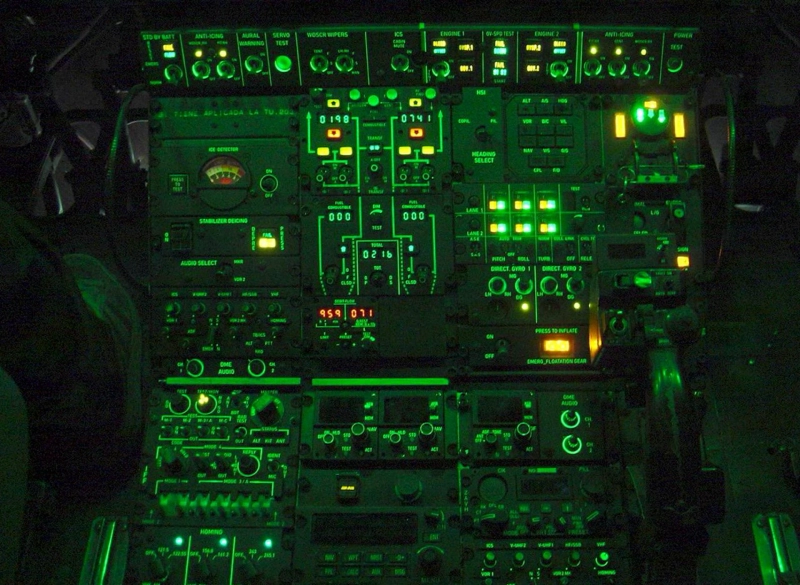Selecting display technology for aerospace applications represents one of the most critical procurement decisions in platform development. The wrong choice can lead to field failures, cost overruns, certification delays, and compromised mission effectiveness. Smart cockpit technology continues evolving rapidly, making it essential for procurement managers and system engineers to understand key selection criteria that separate proven solutions from promising prototypes. This comprehensive guide examines the critical factors that should drive rugged touch screen display selection for aviation applications.
Environmental Qualification and Certification Standards
The foundation of any aerospace display selection begins with environmental qualification. Military standards including MIL-STD-810 (environmental testing), MIL-STD-461 (electromagnetic compatibility), and DO-160 (environmental conditions and test procedures for airborne equipment) establish minimum performance thresholds, but experienced integrators recognize that exceeding these standards provides operational margin.
When evaluating rugged touch screen display options, verify test documentation for extreme temperature operation (-55°C to +85°C for military applications), altitude decompression (up to 70,000 feet), salt fog exposure (ASTM B117), and vibration profiles matching your specific platform dynamics. Armored vehicle applications demand particularly robust shock resistance, while naval aviation requires enhanced corrosion protection. Manufacturers should provide complete test reports, not just claims of compliance.
Aviation authorities including FAA, EASA, and military certification bodies impose strict requirements for safety-critical displays. Ensure candidate displays have achieved appropriate Technical Standard Order (TSO) approvals, DO-178C software certification levels, and DO-254 hardware design assurance levels matching your system's criticality classification.
Optical Performance and Readability Requirements
Display visibility directly impacts pilot workload and situational awareness. Smart cockpit technology demands screens that maintain readability across diverse lighting conditions—from brilliant sunlight on carrier decks to complete darkness during covert operations. Key optical specifications include:
Brightness and Contrast: Minimum 1,200 nits brightness for cockpit applications, with 1,500-2,000 nits preferred for canopy-forward positions or helicopter operations. Contrast ratios exceeding 1000:1 ensure readable displays even in challenging lighting geometries.
Optical Bonding: Air-gap displays suffer from parallax errors and internal reflections that degrade readability. Optical bonding eliminates these issues while improving impact resistance and altitude performance. Verify bonding quality and adhesive specifications to ensure long-term optical stability.
Anti-Reflective Treatments: Multi-layer coating technologies can reduce surface reflections by 95% or more. Evaluate coatings under representative lighting conditions, as some treatments that perform well in laboratory testing fail under direct sunlight with specific incident angles common in cockpit applications.
Viewing Angles: IPS (In-Plane Switching) LCD technology provides superior viewing angles compared to TN (Twisted Nematic) panels. This proves critical for displays viewed by multiple crew members or positioned at non-perpendicular angles to pilot sight lines.
Touch Technology Selection and Gloved Operation
Touch interface technology represents a critical decision point impacting usability, reliability, and cost. Rugged touch screen display systems typically employ one of three technologies:
Projected Capacitive (PCAP): Offers superior sensitivity, multi-touch capability, and optical clarity. Modern PCAP controllers maintain functionality through flight gloves and NBC protective equipment, making this the preferred choice for modern military applications. Verify electromagnetic immunity to prevent false inputs from radar systems or communication arrays.
Resistive Touch: Proven technology with excellent gloved operation, but limited to single-touch and susceptible to surface damage. Still appropriate for specific applications where budget constraints outweigh advanced functionality requirements.
Infrared Touch: Completely transparent overlay technology immune to electromagnetic interference. Excellent for large-format displays but requires careful bezel design to prevent false inputs from debris accumulation.
Leading suppliers such as Aeromaoz, recognized globally for rugged mission-critical HMI solutions, provide extensive gloved operation testing data across various protective equipment types to support informed selection decisions for aviation and military vehicle applications.
Processing Power and Graphics Capabilities
Smart cockpit technology demands significant computational resources to render high-resolution synthetic vision, process multiple video streams, and execute complex graphics overlays in real-time. When evaluating display systems, consider:
Graphics Processing Unit (GPU): Ensure adequate processing power for your most demanding display modes, including 3D terrain rendering, simultaneous video windows, and dynamic tactical overlays. Plan for future capability growth by selecting systems with 50-100% processing margin.
Display Resolution: While 4K displays offer impressive image quality, they also demand significantly more processing power and data bandwidth. Evaluate whether your application genuinely benefits from ultra-high resolution or if 1920x1200 or 1280x1024 resolutions provide adequate information density.
Frame Rate and Latency: Flight critical displays require frame rates of 60Hz or higher to prevent motion artifacts during rapid aircraft maneuvering. Touch response latency below 50ms ensures intuitive interaction without noticeable delay.
Form Factor, Mounting, and Integration
Physical integration considerations often determine display feasibility regardless of technical capabilities:
Size and Weight: Every kilogram matters in aerospace applications. Compare power-to-weight ratios across candidate displays and consider secondary weight impacts including mounting structures, cooling systems, and cable assemblies.
Connector Standards: ARINC 600, 700, or 800 series form factors simplify integration for transport category aircraft. Custom solutions may be necessary for fighter aircraft or UAV applications with severe space constraints.
Cooling Requirements: Displays operating at high brightness generate significant heat. Verify whether conduction cooling suffices or forced-air ventilation is required. Consider impact on aircraft thermal management systems.
Bezel Design: Narrow bezels maximize active display area while reducing overall footprint. Ensure bezel strength meets crash safety requirements and provides adequate space for mounting hardware.
Lifecycle Support and Supply Chain Stability
Display systems must remain supportable throughout platform service lives spanning 20-40 years:
Component Obsolescence: Select manufacturers with documented component obsolescence management programs and designed-in refresh paths that maintain form-fit-function compatibility during technology transitions.
Repair and Maintenance: Verify availability of factory repair services, exchange programs, and technical support. Understand mean time to repair (MTTR) and spare unit requirements for your operational tempo.
Supply Chain Security: Military programs require secure supply chains with counterfeit prevention measures and trusted foundries for critical components.
Conclusion
Selecting the optimal rugged touch screen display requires balancing technical performance, certification requirements, lifecycle costs, and schedule constraints. By systematically evaluating displays against these criteria and working with experienced manufacturers of smart cockpit technology, procurement teams and system engineers can confidently select solutions that enhance platform capabilities while minimizing program risk throughout extended operational lifecycles.


